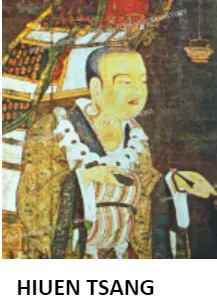![]() May 16, 2024
May 16, 2024
![]() 21441
21441
![]() 0
0
Hiuen Tsang, also known as Xuanzang, was a revered Chinese Buddhist monk who journeyed to India during King Harsha Vardhana’s reign to acquire Buddhist scriptures. His travels spanned over 14 years, during which he explored various regions and studied Buddhism. Hiuen Tsang’s accounts provide valuable insights into ancient Indian history and culture, shedding light on the social, religious, and political conditions of the time.

| Must Read | |
| Current Affairs | Editorial Analysis |
| Upsc Notes | Upsc Blogs |
| NCERT Notes | Free Main Answer Writing |
Conclusion
Hiuen Tsang’s observations during his travels in India offer a glimpse into the vibrant society of ancient India under King Harsha’s rule. His admiration for Emperor Harsha’s support of learning and Buddhism, alongside his detailed descriptions of Indian life, enriched our understanding of this significant period in history. Hiuen Tsang’s writings continue to be valued as trustworthy sources for scholars studying ancient Indian civilization.
<div class="new-fform">
</div>
Latest Comments